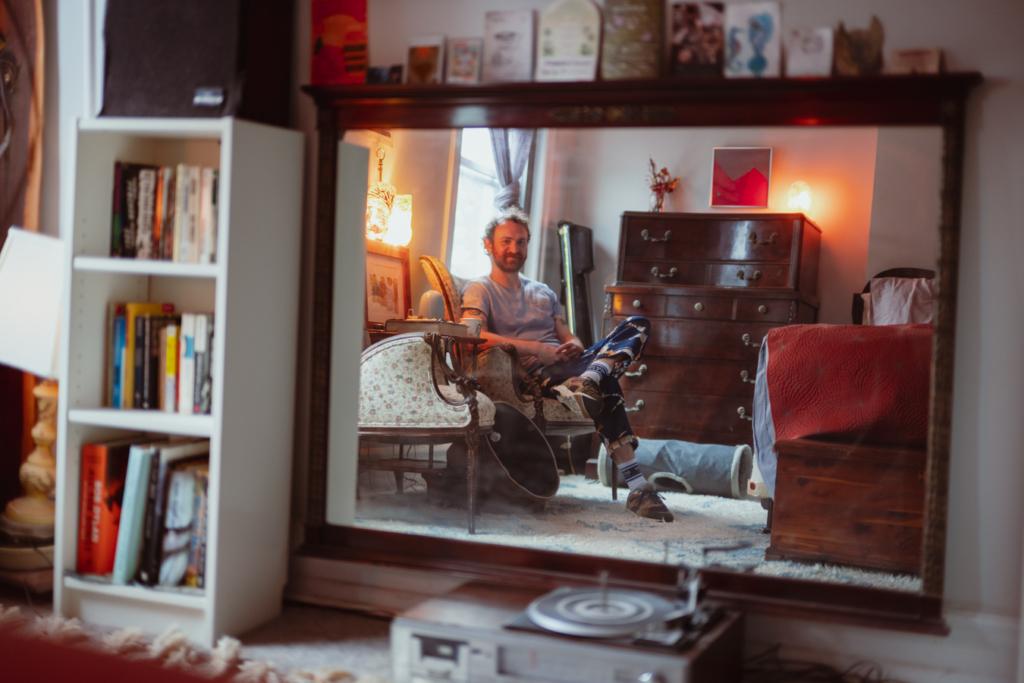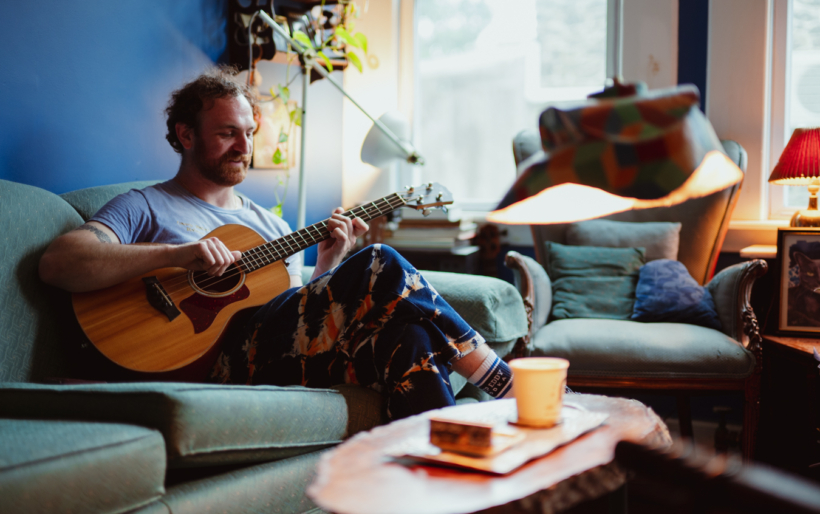
Erik Kramer | photo by Paige Walter
Paints, Plants, and ProTools: Erik Kramer makes space for it all in his Germantown home
The Germantown home of the Philly bassist and producer is a glorious mix of scavenged chaos and harmonious feng shui.
The day we stop by the home of Philadelphia bassist and producer Erik Kramer, it’s a grey and rainy afternoon — perfect weather for a cup of tea. He puts a kettle on, grabs some mint leaves from the garden outside, and proceeds to talk about the previous five weeks of his life: back to back stretches on the road, first opening up for Mariee Siou, a soft and serene folk singer from the Pacific Northwest, followed by a run playing in Minka, a high-octane funk rock band from Philly.
“They could not have been more polar opposite tours,” Kramer says. “Listening room energy, and then party energy.”
The vibes were good, but still, five weeks is emphatically a lot, and Kramer is grateful that he has such a warm and welcoming house to return home to: a brownstone in Germantown’s rolling hills inhabited by fellow creative-minded folks like multi-disciplinary artist Sovei and keyboardist / composer Logan Roth, who we run into during our visit. It’s a space decked out with instruments, records, books, artwork, and inspirational totems.
He gestures to an antiquated piano in one corner of the living room, and says “This still has the warranty on it from 1907. I don’t think they’ll honor it anymore.”
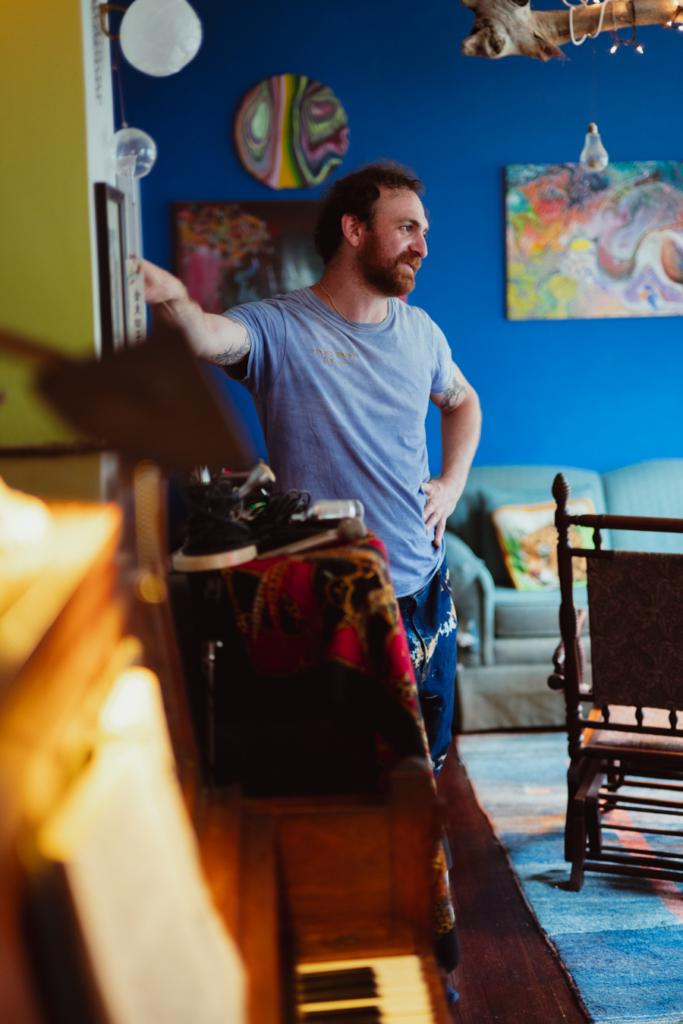
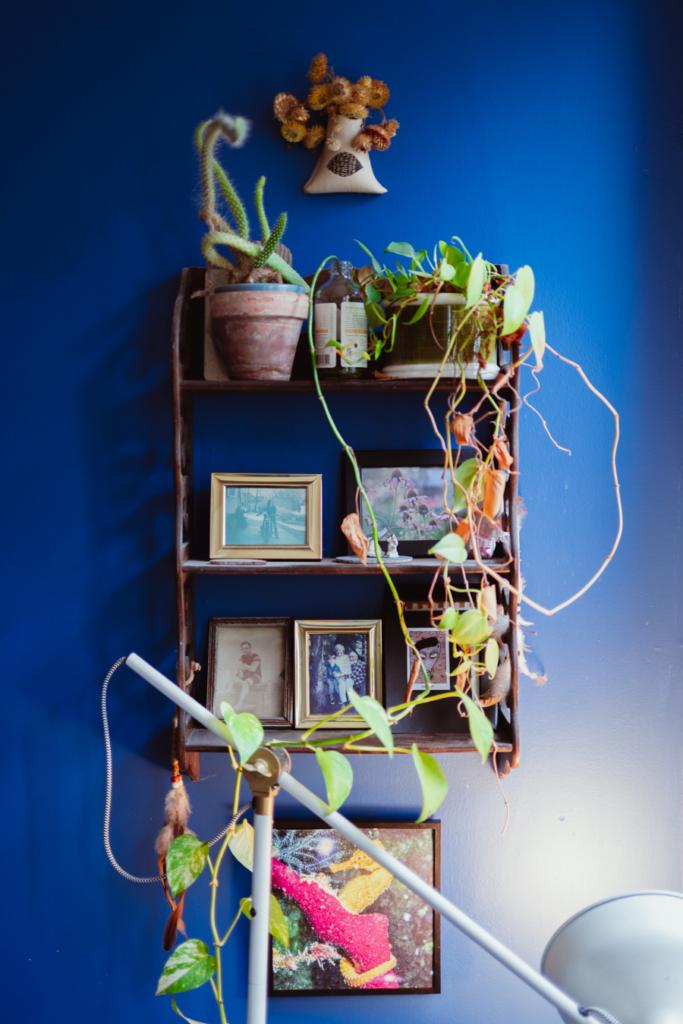
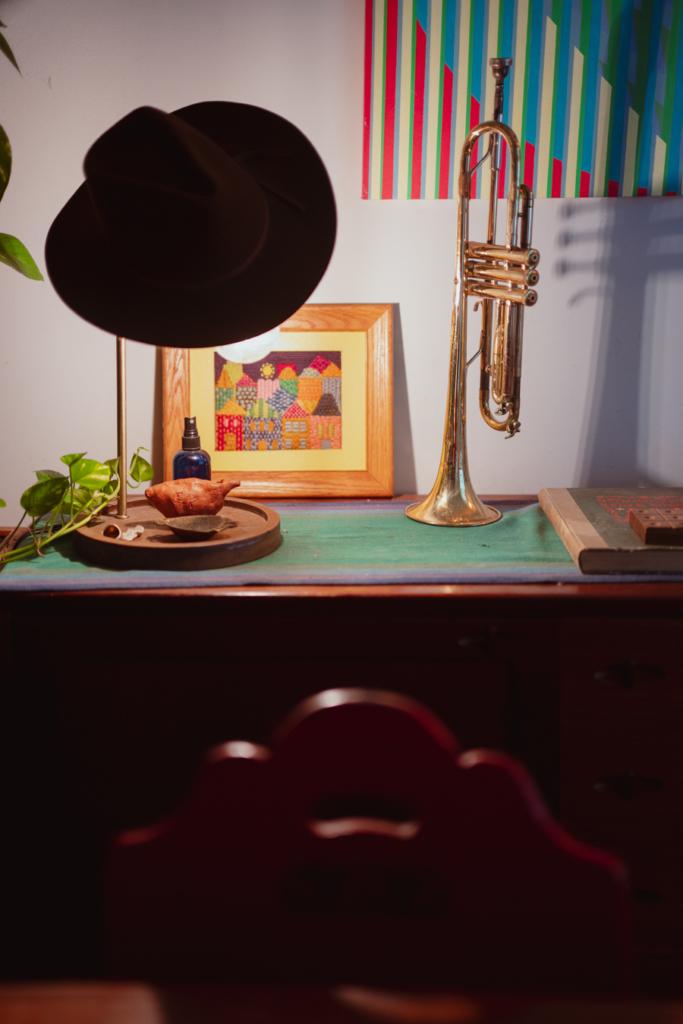
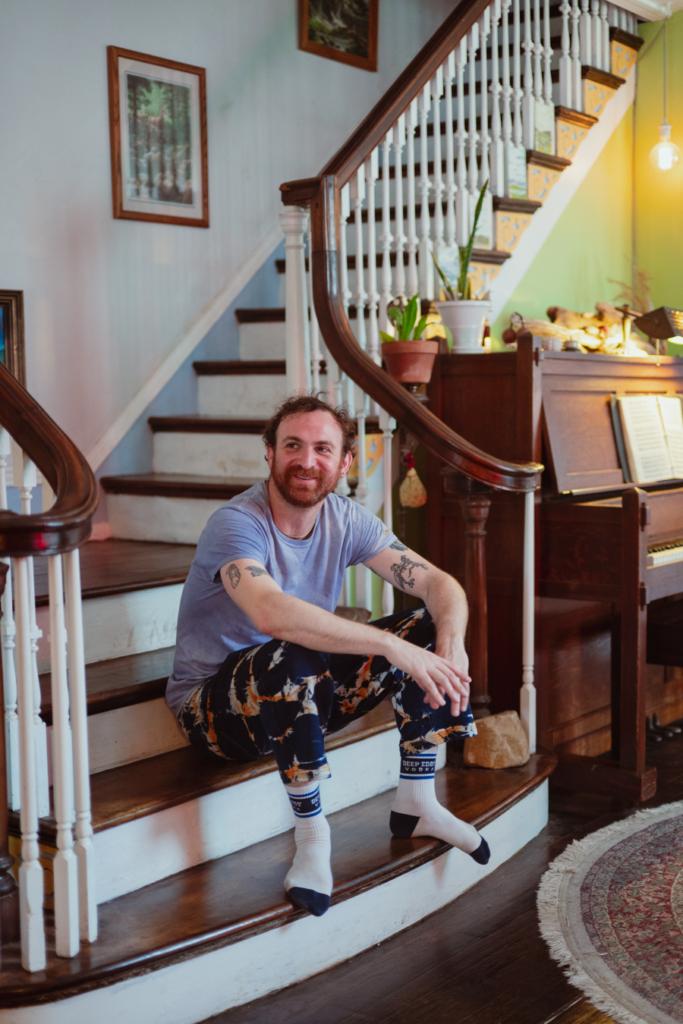
Kramer has lived here since 2020, and the house is 110 years old. “I do not what’s going on behind the walls,” he jokes. But out on the floor, his home has multiple functioning spaces; a studio downstairs, a rehearsal space on the ground floor, sometimes used as a live music space; a visual art studio upstairs that becomes a melange of everything — instruments in the corner, painting on the surface of the wall, a computer with a ProTools rig set up at the window overlooking a beautiful backyard.
Kramer says the house can be very collaborative, down to group painting projects. “A lot of times when we have shows here, we set up a canvas and tag team,” he explains. His parents are both artists; two paintings in the living room were done by his dad, and his community of friends and musical collaborators keeps the space vibrant. Over time, that’s included Philly names like Donnie Coco, Sug Daniels, and Planette Automatic (who, under their old name The Lunar Year, filmed a popular Tiny Desk Contest entry video in the hall bathroom).
“I did not intend to live as communally as this, but it worked out,” Kramer says. “The reason the house looks the way it does is the people who have lived here over time and the way they’ve curated the space.”

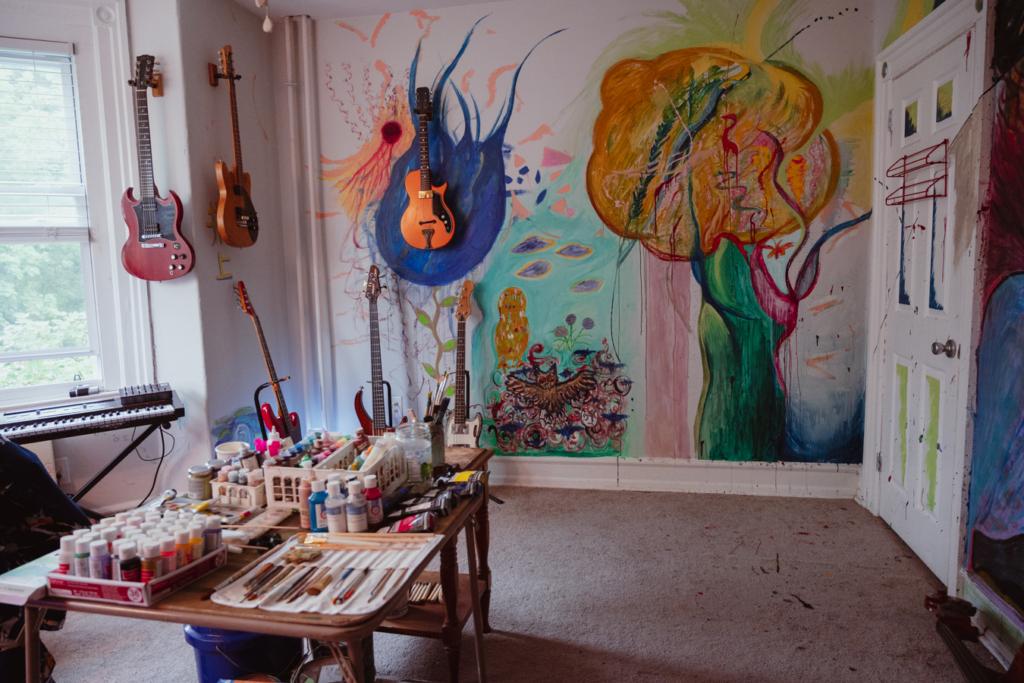
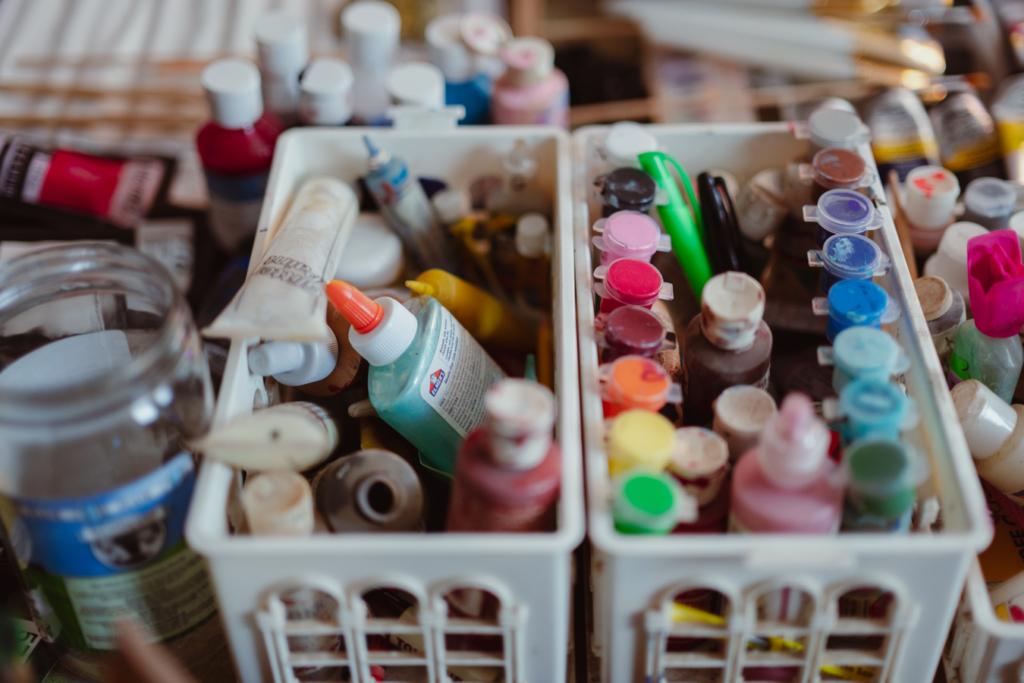
Kramer branched out this spring into a more semi-organized series at the house that he calls Office Hours. It’s a recurring open jam session, and he offers more programming through his open studio afternoons on Sundays at 2.
He describes both events as collaborative and “ways less capitalist” than your traditional three- or four-band concert bill. “I love throwing shows,” Kramer says. “But I love when people can equally participate in things too.”
Being nestled in Northwest Philly makes it an ideal place to establish a hub. Kramer cites exciting DIY-minded venues like The Fallser Club and Harmonie Hall, businesses that host concerts like Attic Brewing and Young Americans Cidery, and events like Brittany Ann Tranbaugh’s Meetcute series at Rigby Mansion, as sources of inspiration.
He’s also a huge fan of the Baynton Manor Halloween show, which every October cultivates a carnivalesque atmosphere in Germantown: “thousands of people, ten bands, aerials…”
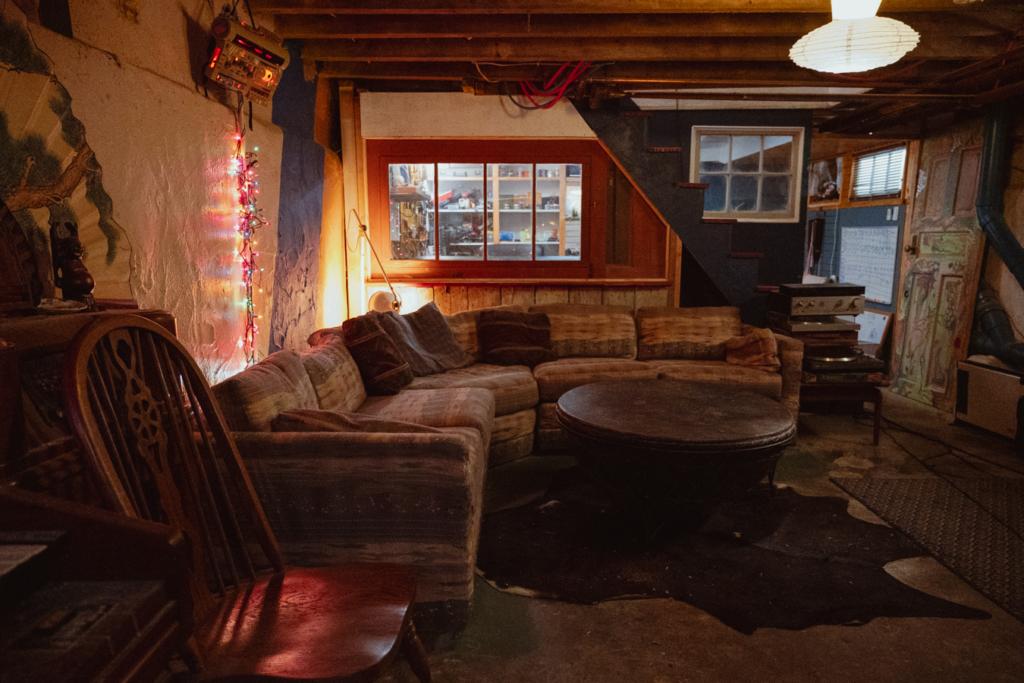
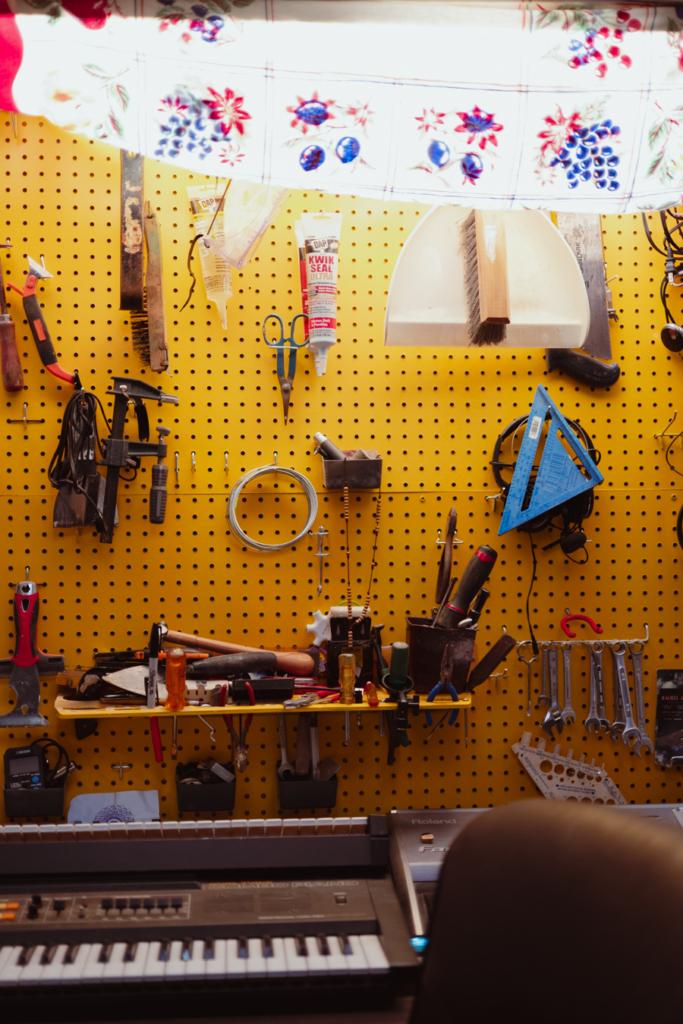
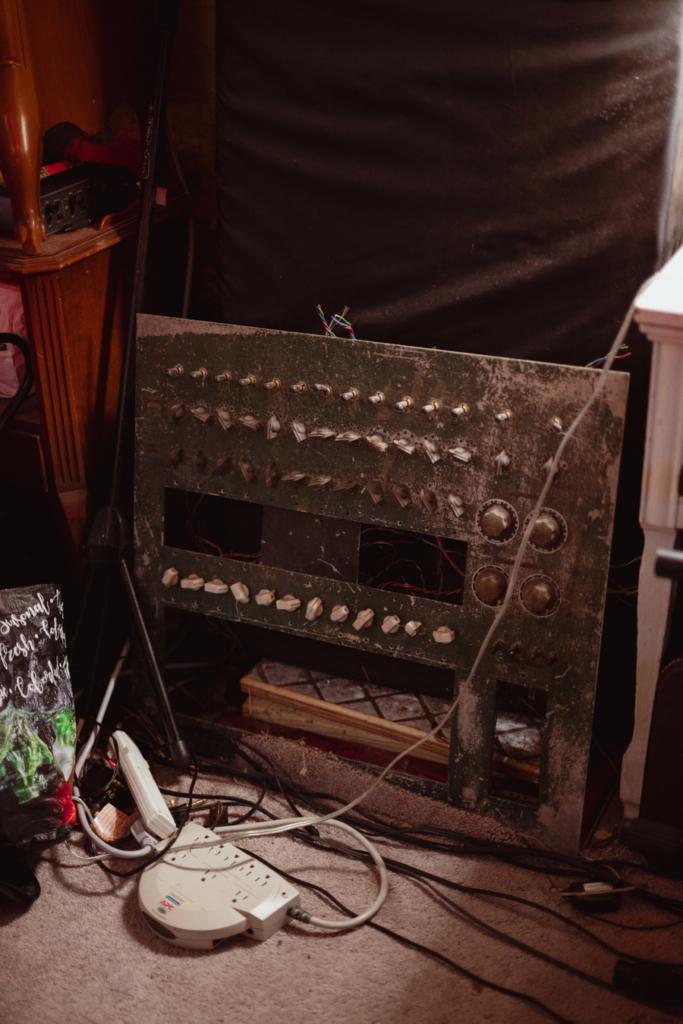

A trip down a steep flight of stairs and we’re in a basement, filled with — surprise! — even more instruments, recording gear, and several toolboxes worth of equipment to make them all function. Kramer and his housemates’ various projects operate in the basement in the fall and early winter, then move up to the better ventilated living room in the spring when the weather breaks.
“We rehearse here,” he says of the basement. “And we can record to four track. But it’s nice having windows being above ground.”
Sug Daniels recorded her upcoming record I Believe In You in this space, and Donnie Coco records their music down here as well. Indie rockers American Trappist threw their album release party on the south half of the basement, where plush couches and pillows make a comfortable seating area; the studio setup behind a partition makes it possible for Kramer to make multi-track recordings of all the live sets he hosts, which have filled up countless hard drives.
Sometimes he wishes all of this was located a little more centrally in the building. “But also, somebody who cares about feng shui,” it’s a preferred set up. “Most people do not want to fight with having a full rehearsal studio in their living room.”

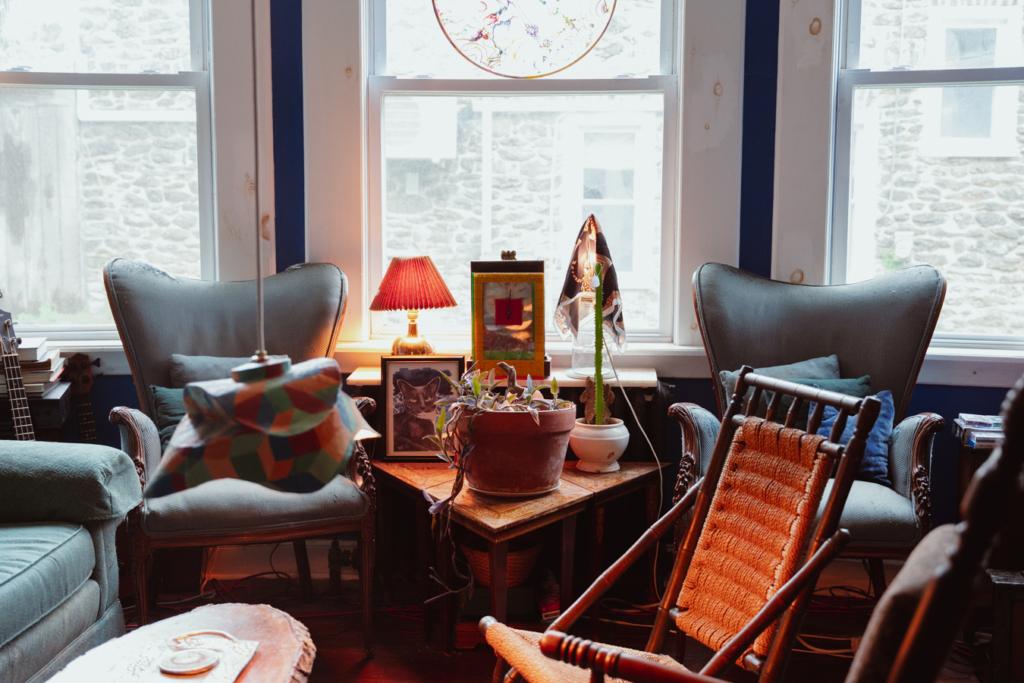
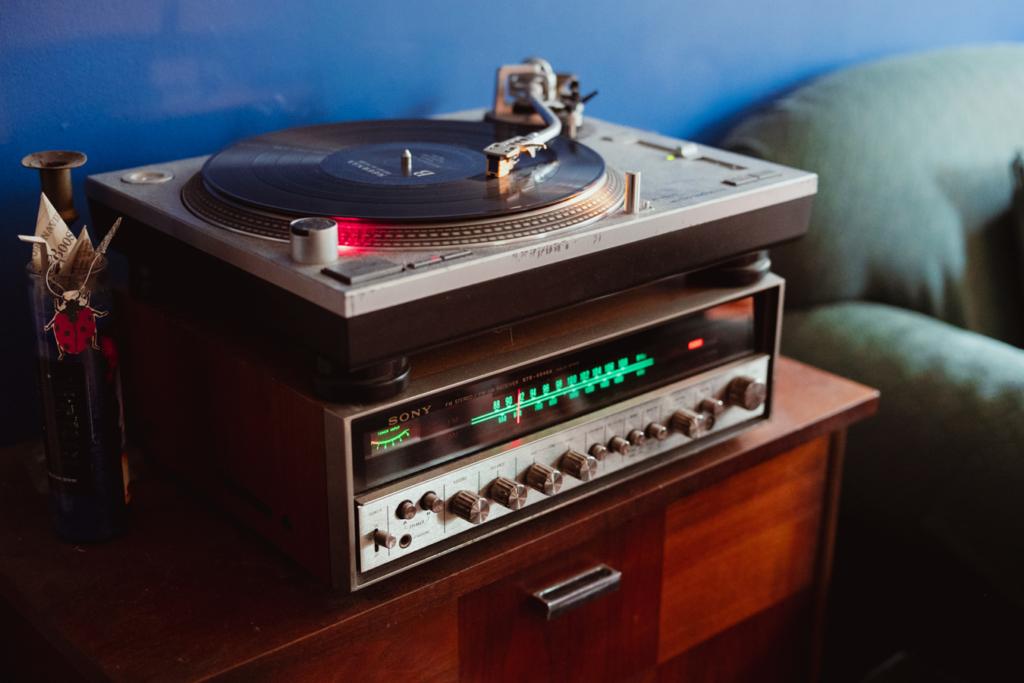
His love of Feng Shui is evident in the impeccably curated living room; the calming colors, the symmetrical way that art hangs, the objects arranged with harmonious intent. He didn’t like the chandelier that hung in the house when he moved in, so he fashioned his own with string lights and a piece of driftwood scavenged from Penn Treaty Park in Fishtown; other pieces of wood from the same haul decorate various nooks of the house.
“We felt ridiculous,” Kramer recalls of the day he and his friends found the driftwood. “Some of these pieces are basically the bottom part of a tree, the size of one of the person carrying it.”
Further back in the house is a big kitchen — “this is where people tend to converge at shows” — while a shelf of grow lights and plants leads us to the lush greenery of a backyard, where the ever-busy Kramer says “I’m getting into gardening.”
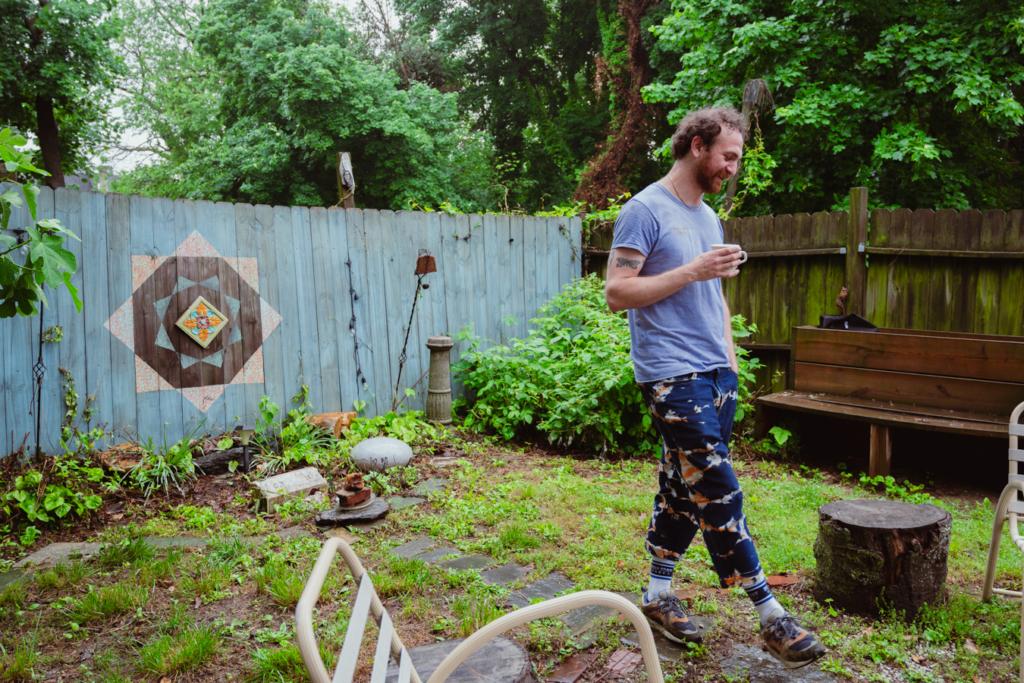
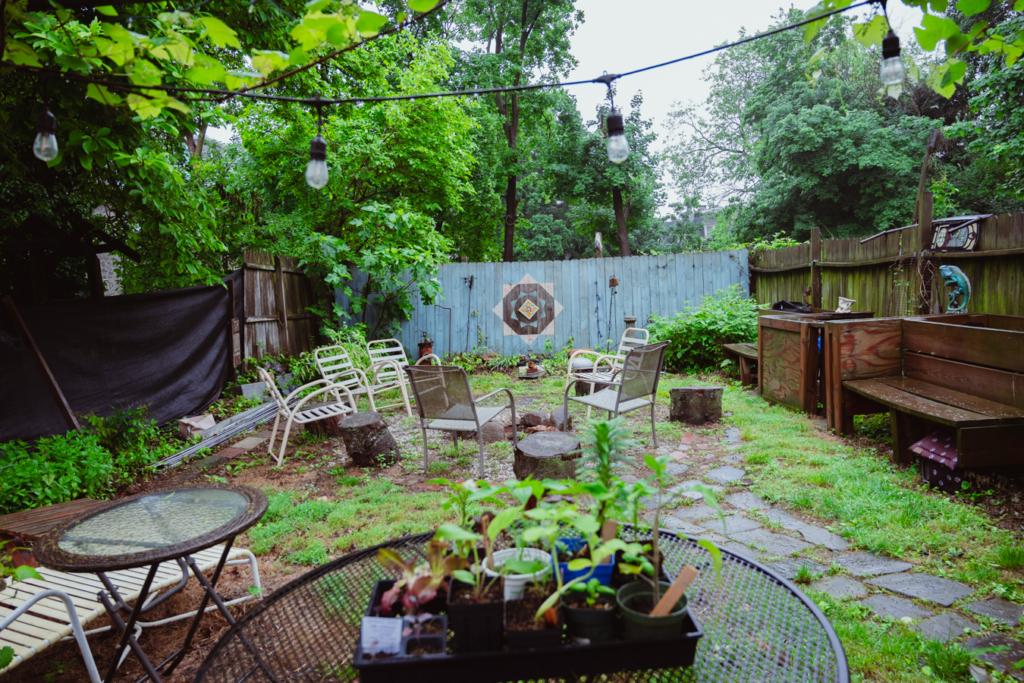
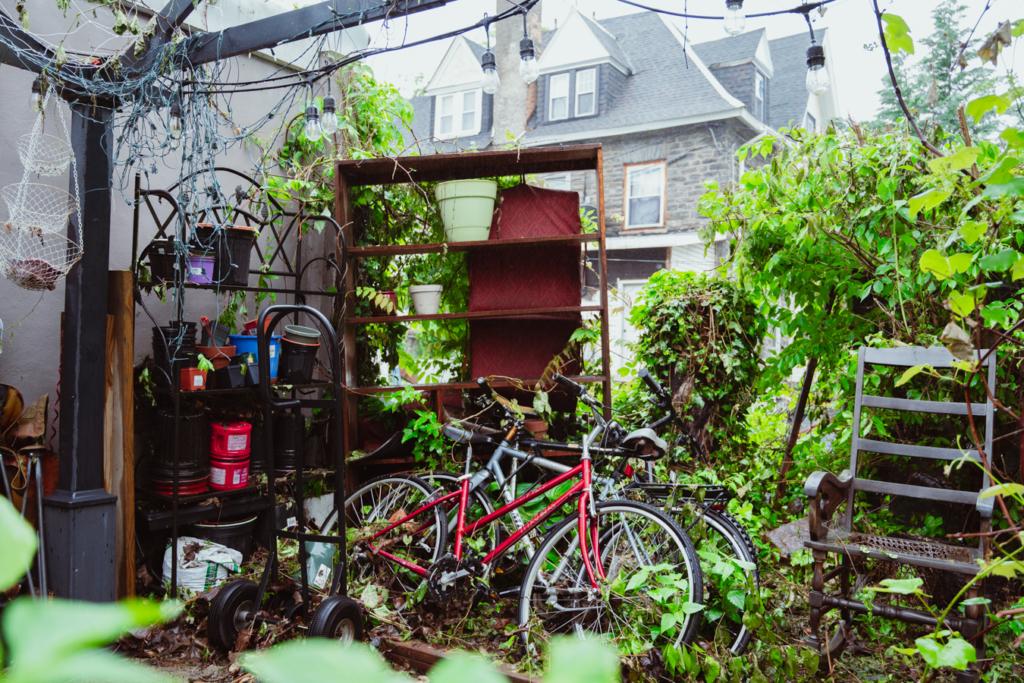
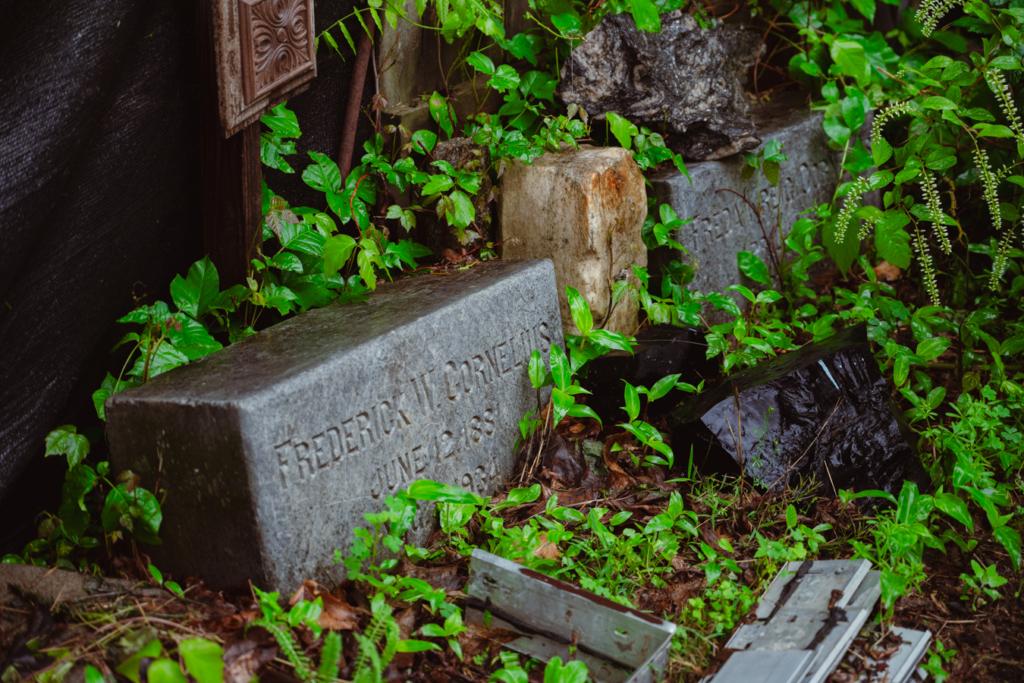
Like the rest of the house, Kramer’s backyard is a juxtaposition of chaos and beauty, blossoming new growth amid the artifacts of earlier generations. This includes its row of tombstones — yes, Philadelphians of the 1800s are actually buried in Kramer’s backyard, and between tours he’s done some internet sleuthing to help track down their descendants.
His inquiry is still, admittedly, a work in progress. But that state checks out as well, given the always-in-flux nature of Kramer and his community of endlessly creative folks. There’s always more you want to add, always more you can say or do, and a work is never truly finished — whether it be a song, a painting, or a home; it’s a thing with a life of its own.
